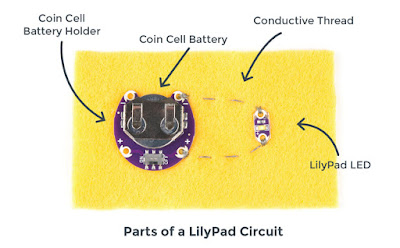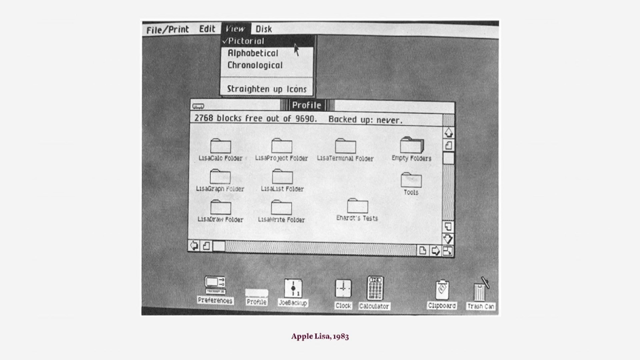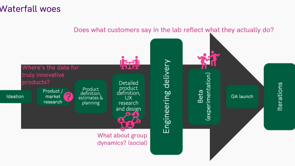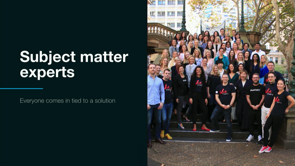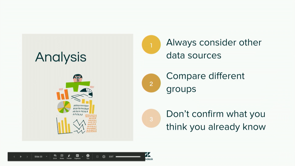Responsive (Clothing) Design
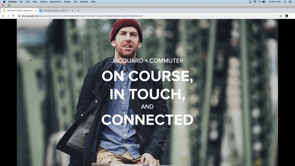
(upbeat music) - So I feel like the wild card here.
As John was explaining, I design for interactions with physical things and people and spaces and lead teams and design for emerging technologies. One of the things that I work with are interactive textiles to make responsive clothing.
Does anyone work with interactive textiles? Yes, okay, cool, I have some brethren.
So I thought it might be kind of fun to, ah, yes, thank you, to talk about, 'cause I know technology people love to talk about scale, I thought it'd be fun to talk about my experience scaling from kind of an art-couture context of responsive clothing to mass manufacturer ready to wear. So what do I mean when I talk about responsive clothing? I mean clothing that responds to or induces a stimulus or reacts to one communicating with you, someone else, or your environment, which basically is all clothes.
But because we're putting technology in it, we're adding this adjective, so I chose responsive. I wanted to share one of my favourite examples if it. It's by Behnaz Farahi, and it's a garment that reacts to where someone is looking when they're talking to you.
It's a little bit of a commentary in it, you will see. So as you can see, this is 3D printed, so it's a little bit of a harder material.
I, in contrast, work with soft garments.
I just really like, I like the naturalness. I like that it's like something we already wear every day, and I really like to be cosy.
And maybe I'll just give you a really quick crash course that's like super oversimplified about how these work. Especially for you people in the audience that know, it's gonna be super oversimplified, okay.
You usually have some kind of power source, a battery, some kind of microcontroller that you've programmed to say, "Do this." Then you have conductive thread that, it's like a regular thread or yarn but has some kind of metal or metal alloy in it. And that helps communicate, send the current and communicate to the inputs and outputs.
And then you'll have something like an LED or a motor or a sensor.
This I shamelessly stole from LilyPad.
Definitely check them out.
They make little sewing kits for just like interactive projects.
The sewing kits are really, really fun.
So the real crux of it are these conductive threads.
They're real enablers, but they're also very fragile. So like you end up having, all these years, we've ended up having to work by hand with them 'cause they like, if you put it in a sewing machine, often you'll end up kinda breaking the metal, and then you've like, you've broken your current. Or something I've done a lot is ending up crisscrossing your threads, and then you like short your circuit. So this is why we've all been like painstakingly making our little crafty conductive thread projects. And so that's why I kind of liken it to couture. It's like painstaking, it's time consuming. You're often using different unusual materials. A lotta times, it's only really made for one person to wear.
A lot of our projects end up being in more like peer-review circles, like maker fair or academic circles.
And you know, what else is a runway show but peer review? And a lot of it is usually theatrical dramatic. That was certainly what we were doing back in the early 2000s at the Topological Media Lab with my mentor Sha Xin Wei at Georgia Tech. We were designing instrumented clothing, so clothing that could create and so synthesise music, the audio and video, as you move.
I really love this garment from the lab.
It's constructed in a way that makes you wanna just like explore your movement and your relationship to it and the environment, which I'll just take a like quick sidenote here about clothes in general.
Like, why do we wear clothes? Okay, we wear clothes, one, so we don't get arrested because it's usually illegal to be nude, okay, fine. And we wear clothes to protect from the elements. But if those are the only reasons, we'd probably have like, I don't know, two garments in our closet.
Because the real reason we wear them is to represent ourselves a certain way.
They're completely about expression.
You probably have like 20 T-shirts, you know, like tonnes of dresses, but you chose the one you're wearing today to represent yourself a certain way to others and to relate to other people a certain way in your environment and to feel a certain way. So these are all kind of like expression and embodied cognition choices you made, and that's, I feel really passionately that that's the role of clothing.
It already has a bunch of superpowers, and that is part of what we were exploring a lot is that relationship between the person and their garments and environment and others. So just going back, so these costumes were really, really embedded with all sorts of sensors. There was a lot of hardware and software 'cause we were doing continuous synthesis and realtime reaction.
And maybe this will auto-play, yes.
This was a while ago, before iPhones, so some of this technology can be a lot smaller now. So there's the mote, and you can see, it's a little bit burdensome for her to have to have all of this on her.
But again, we were not tracking gestures.
We were tracking her entire movement.
Ah, I just found this video.
That's like baby me coding.
So it's just kind of exciting 'cause there's no documentation of this 'cause it's before iPhones.
So I'm always just scrounging for what I can find. But yes, this is like we had to continue its kinda evolution, like state-evolution machine, that's what I call it, that was taking in the data. And I thought some of you might enjoy this. This is my Max/MSP patch.
Does anyone know what I'm talking about? Yes, okay, it's a musical programming language. It's very visual, it's awesome.
And I just wanted to show you this one patch because, or it's a series of patches in a patch, because we were really pushing the limits of on-body tracking.
This alone are things that would affect audio level. So it was like proximity to certain things, touch of certain things in a space, and nuance. And the reason I geek out about this is because it was a really deliberate choice for us to not make things discrete.
Like, when you do this, is really obvious that the audio level goes up.
Because that's not how real life is.
Real life is like, real life is full of grey and fluid movement, and so we wanted that kind of reaction when you're interacting to be like that, too.
That's exactly what I was just talking about. So real life is improv.
It's fluid, it's open.
You don't shake hands the exact same way with someone every time.
You don't like approach people the exact same way every time.
Movement is like language.
This is an issue that I know like voice UX or conversational UX people also come across, too, is that like they're dealing with something in a command scenario versus natural language and how to bridge those worlds.
But I feel like computation was a very deliberate design choice in our part here to make sure we were reflecting real life and tracking that open fluidity.
And we were starting, in that case, then, with social practises instead of the limits of devices and technology, especially the social practises of adornment and body ornamentation and play. This is an awesome moment we caught where one of the models, this is a really cool joint garment, so it's cool to see how they would move together.
But anyway, one of the models, you can see, she just realised one of the wrist things we had on her was affecting the music and making these chimes, and it just like made her really happy.
But she was just kind of fidgeting, and then it's like, oh, wait a minute.
Okay, so all of that to say in contrast, you have learned the exact right way that Apple wants you to touch an iPhone, right? There are very discrete gestures.
And I know people say, "Oh, it's so intuitive "to touch iPhones." But no, it's not, you learned it.
You learned the exact way that they, the pressure that they want, these gestures. This, a lot of, if you work with any kind of mobile design, this has probably come into your life. I call these udder charts 'cause they look like cow udders to me.
(audience laughs) And they're kind of the bane of my existence. I kind of hate them.
But designers always end up having to make them to communicate these discrete gestures that people are able to do to command their device or whatever it is.
But they're usually not very natural.
And they have to be, they have be kind of obvious because again, you don't wanna get confused in the rest of the person's natural language world. And yeah, this is just another one from Kinect. And it doesn't matter how natural we try to make those movements, it's still like, there's still these kind of weird learned things that feel outside of your normal day to day, and they kind of become novelty once you learn them. Let's see if this works.
So I just wanted to share this 'cause this video makes me really happy.
This is one of our spaces where people, so they're all in instrumented costumes, and then we had instrumented objects, and they're exploring together.
Oh, it's over here.
There's no audio, but that's okay, it doesn't matter. I can kinda tell you what's going on.
And it's kind of fun to just see them running around. So you can see people just like joyfully running around. This woman we're interviewing is just talking about her experience in the costume and how she loved it. But people are exploring 'cause they, because it's not discrete, like, when I do this, this happens, it's more you're making sounds with other people, they're really running around and interacting with each other and the objects to make music and figure out what's making the music. And that's one of our goals.
Like, isn't it lovely that in a space, just like real life, we are building, we're building. We're building harmony with the space and with each other, and that's, yeah, that's why I feel so passionate about this, being able to track natural movement.
So there are some unfortunate implications of all of this, in designing this kind of like art-couture context in that's, it's not super wearable.
So it's kinda uncomfortable 'cause you are, have all these like sensors that are actually in there that you're trying to act like are not in there. And most people just kind of like take their clothes off and crumple them up and throw 'em in the corner or throw 'em in the washing machine.
And you don't really wanna do that with these 'cause you wanna keep, like, you gotta keep the electronics pristine.
And you can definitely not put this in a washer or a dryer.
Those electronics would melt.
So it's a beautiful, but there are trade-offs. And the other one is, this stuff is usually made in a sort of technological experimentation realm, not the season's fashion expertise and skill. So the items, the garments tend to look a bit more novel than something you might choose to wear every day.
So yeah, I was doing that work in grad school, and I loved it, and I really wanted to do that for the rest of my life.
And I remember my grad schoolmates saying like, "That's really cool, but how are you gonna get a job?" And so I was like, "Oh, yeah." And so (laughs) I tried to explore other things. But in the meantime, I was always in the background like, "How am I gonna do this?" Like, I would talk to fashion companies, and the only, the innovation they would talk about is in port innovation.
There's a lot of innovation in fashion, and a lot of it's like weatherproofing, GORE-TEX, awesome, but nothing really in expression.
And so also I knew that this meant I was gonna have to like just sew things by hand. I'm not even a great sewer or anything.
But and so I was like, "Oh, I'm gonna have to do couture "for Beyonce or Bjork on their shows." Not that they were asking, but this is-- (audience laughs) I was like, "Oh, I'm doomed to do this!" Until a few years ago, I met a bunch of other weirdos that had convinced Google to fund us to figure out how to mass manufacture this. And so it's in this R&D department there called ATAP, Advanced Technologies and Projects, I believe it stands for.
And so I joined them as a design lead, and it was a really awesome group of people. And we were kind of all on the same page and had some rules about how we're gonna go about this. One is, Google does not make clothes.
We were not going to go there and make clothes. This is not our expertise, bad idea.
We will enable people who have that expertise to embed this and weave in this interactivity into what they do.
So that was a really important rule.
And also that in doing so, we had to make sure that we fit into their established manufacturing process already.
So one of the things we learned is that like the clothing manufacturer world is super entrenched and traditional, and they have these processes set up.
And you can't go in there and be like, "Let's be agile and put another thing in the factory!" And they're like, "No, that's a lotta money "and will take forever, so whatever we have set up, "it just has to flow within that." So we've partnered and talked to a lot of brands, and one of them was Levi's for many reasons, one of the reasons being that they actually are just, they're based in San Francisco.
So it was easy to harass them and also meet with them, and we harassed them a lot to convince them. And so our team was kinda meeting with them to talk about what we could do, and they're like, "Okay, well, you wanna do denim? "Okay, let's show you how denim is made." And we had no idea, and so they played this video for us to show us how denim is made and then just sat there and watched the team's faces.
So apparently, denim, when it's manufactured, it goes through some crap. It's like stretched, and it's burned, and it's like put through industrial washes and industrial looms.
And like, we're sitting here with our little conductive thread, like, "Oh, this fragile thread." And they're like, "Yeah, is that gonna make it through?" And so because it's a roomful of engineers and designers, we were like, "Challenge accepted." And so we till the very end were really iterating on how to make that work.
And I think one of the awesome things about that was we knew that like if we cracked denim, because it's so hard, we can basically crack anything. And I can't unfortunately go too much into the secret sauce of how we did it, but surprise, we did it! (laughs) And so this is, you can kind of see in this how the metal part of the conductive thread is being protective and woven around to be durable enough to make it through, make it through those industrial looms.
And this was just a triumphant moment.
Wonder why my sound's not working, oh well. Anyway, a vid actually like going through the denim process. So you'll get to see that burning and stretching moment again, and it makes it through. And then this will also show you what an industrial washing machine looks like.
It's nothing like your washing machine at home. It's pretty major, and so we had to make sure, you know, for this thing to be wearable.
(audience laughing) That's our mechanical engineer, it's so happy. For this thing to be washable, we tested it. It had to go through numerous tumbles, had to make it through this.
So yay, okay, challenge one of scaling complete. Okay, oh, and I will point out, too, that the yarns that we make come in different forms and different colours, so you're not just stuck with one. So the next part, which ended up being a really fun part of my job, was okay, so what do we do with it? So originally, we were like, "Oh, we're just gonna "make this stuff and throw it over a wall, "and designers, fashion designers, "will know what to do with it," which is not true. So we ended up having a lot of really cool like cultural sharing.
We are like we are sharing like technology education, and these traditional companies, I feel like it's a bad thing to say traditional companies, 'cause they're very innovative.
But you know, they've been around a lot longer than what we're doing, but they would share a lot about their brand and their processes, and it ended up being more of a partnership than us being like, you know, "Go do stuff." And so I did have to bridge that gap of what can you do with it, because it's just such a like, so out of how you would normally think of garments. But really, it's not, because what I found is that they already have a story.
Like, all the designers have a story about their garment, there's a whole backstory. And no matter what you feel about personas, they have a version of personas often that they'll call a muse, and so there are all these stories.
And so I would say, "Okay, well, let's further "the story of the garment if we had "like digital superpowers.
"So how would you just further that story? "You already have all these nice details." And I'll give you an example a little later of what I mean, but "How would you push that forward?" I think the audio won't play, but in London, there's that row, Savile Row, I feel like I'm always saying it wrong, of where it's like you have a bunch of really awesome tailors.
And he's saying here, you know, "Nothing's changed "in our field for like hundreds and hundreds of years, "so when something comes along now, it's really exciting." And they were another group of people that we seeded this with 'cause we felt like if we succeed with them, then this thing makes sense. But at the end of that clip, he says, "I'm looking forward to figuring out what to do with it." And that was kind of the attitude we got from everyone, like super enthusiastic, but kind of needing that bridge.
So Levi's is a very like, it's classic, it's entrenched. You don't mess with Levi's.
It's been around since 1873.
It didn't really make sense from the brand standpoint for us to mess with that.
But they have a line called the Commuter line, and that's where they do a lot of their innovation as far as like performance fabrics, durability, stretch, and it seemed like this might be the perfect fit. So are, do any of you have any Commuter clothing? I don't know, okay, so it's, a lot of cyclists wear it because it's so, like, it has this great stretch and like reflective details.
And it had a very, very strong community, especially when we were working on this, of people, because a lot of them were cyclists.
And especially in the U.S., cycling is like an identity there, I think, more than other places because it's kind of a normal thing everywhere else. (audience laughs) But yeah, it's a real identity, so there's like a community that we were able to tap into that existed. And so we kind of could go into the traditional realm of doing user research with them.
So we spent about six weeks doing, or the team spent about six weeks doing design loops of like understanding their needs and live prototyping and kind of just like going in that loop.
And they were pretty large sessions.
There were like three sessions of more than 20 people. They were like daily commuters.
We had like professional cyclists or like delivery people or bike messengers, safety-conscious riders, aggressive competitive riders. We had them all, and it's not just for cyclists. We just knew that they were super-fans.
We also just had a lotta people wearing this that, or wearing these clothes that are just like urban commuters just hustling to the train day to day as well.
And what we found that kept bubbling up is this opportunity to help them not have to pull out their phone so much.
Basically, there was this tension of like being connected to the things that matter and not being distracted by the things that don't. And there was this one quote, like, "I feel like an idiot every time "I pull out my phone while I'm riding, "yet I do it like two to three times per day." And so they're doing it.
There's this desire to like still control and connect without compromising their attention.
And then, it wasn't just during cycling.
It was like while people are hustling to the train or to the bus or walking, the amount of times that they were like having to pull out their phone to like figure out the next direction or answer that text or see who texts or, you know, whatever, take a photo.
Or it'd end up just like, you end up holding the phone in your hand the entire time, and you're like, it just occupies your entire hand.
And the other thing that came up, this is like a super-cheesy image, but I used it a lot to help our team or like our project managers and engineers help kind of get the feel of what the commuters were telling us, which is they really, really value people and that attention to people and their environment. And so when they're with people, they just wanna be, like say you haven't seen someone in a long time, and you're having coffee with them, but you might be like waiting for an important call as well. And so most people would kind of, yay, you know, sit down, and then put their phone on the table. Well, if you're familiar with Sherry Turkel, she did this awesome research that showed that when you have a phone like just anywhere around, it kind of represents all these elsewheres you could be. So it totally distracts you when you're with somebody. And in the research, they even flipped the phone over so the screen was down, and it still had the same effect. It's the symbol of the phone being there.
So we really wanted to help these people feel like when I'm with a person, I'm giving them my full attention, and there's some other way that I can be notified about something that might be important that doesn't take away that eye contact and that time together.
So it's a lot about being able to be present in your environment with other people without constantly checking your phone.
So this is the value prop that came out was, you know, being on course, in touch, connected, enabling freedom, allowing you to be connected with the essential without the distraction of all that other stuff, and really about peace of mind. And I'll show you, we came up with these things called abilities that are ways that you do that, which I will show you a little later.
Ah, so now, this is where my couture art dreams start narrowing.
So Levi's said, "Well, we pick a part of the garment "to make interactive, we can't use all of it." Part of that is because of manufacturing.
It's also 'cause we weren't gonna be able to like embed this with sensors 'cause it has to be, you know, mass manufactured and put in a washing machine.
And so the limitations were, one, it has to be an area that's rigid.
It's rigid enough to hold the threads and some other things we needed it to hold. And it has to be something that can be put on separately as part of the process, like kinda sewed on as like its own unique, discrete thing. And so we had the option of the collar, the pocket flap.
There's a word in the fashion world for that runner with the buttons on it, and I can't remember, but that, and the cuff. And we did research on where it's natural to touch and also where that meets, where it's societally agreeable to touch or acceptable.
It turns out anything from down here, it's not acceptable, so we keep it up here. And so that left the cuff as where our interaction would live.
And then, this meant, ♪ dun-dun-dun ♪ I had to make an udder chart.
(audience laughs) So then, you know, we don't have all that on-body processing, and now what we're doing is very discrete control.
You're having control of your phone, so we needed these very obvious actions.
So we did a tonne of research.
Again, I feel like I could do like 10 million talks with you guys about this whole process, but we were surprisingly iterative on something where we didn't always have the whole garment all the time. But we did a tonne of research to understand what are natural gestures that our algorithms that we were building at the same time could recognise. We also needed to limit it to things that people could remember.
You can come up with all sorts of things, but if people can't hold that much in their heads. So this is what we came up with, which was brush in, brush out, so imagine the cuff is here, double tap, and cover.
I'll show you what those can do in a minute. But the other thing that we found in research is that people wanted to be able to customise these gestures, just like you would customise any of your clothes.
'Cause we gave them different instances where we we're like, okay, these different gestures will always do the same thing.
This is your music jacket and if you're like, "Uh, I wanna make it do what I want it to do." So yet another hour I can give you sometime is the actually onboarding process for this was like super, super cool from a design standpoint because we had to teach them so much.
We had to teach them, your jacket is interactive. Here are some gestures that you have to do, and you can make these gestures, you can assign them to different things, so much we had to teach them.
And you wanted to get people to the product right away, but you actually needed to do that education. Sorry, I'm going on all these tangents, but there's so much to share.
So like when I first got there, I was like, "Oh, we need to make this fast.
"People just wanna get to the product.
"All they need to do is like turn it on." And so the first iteration of onboarding, I did that, and we took it to user research, and I watched, and I was like so pleased.
I was like, "Oh, she did it so fast!" And the researcher looked and me and goes, "Too fast," because the person didn't learn all that they needed to learn.
And so we did a tonne of iterations to find that sweet spot of like how do we teach and progressively disclose information as it's needed so that people still get to the fun part. Oh, yes, also, we (laughs), we originally, when we were kind of creating our algorithms to understand gesture, we had this one guy, Dave, Dave P., and Dave was just like, we would just use Dave's gestures. But the problem was, when anyone else would try to control the, you know, use the jacket, it didn't recognise them 'cause it only knew Dave.
And so we (laughs), this is where we used machine learning. So we had like a whole other work stream of just tonnes of people all the time, and researchers are helping us, get data for people doing all these different touches, you know, doing basically these gestures the way they would do it in different scenarios so that our algorithm could learn that diversity of touch.
So what did we do with all that hardware that I showed you earlier that we had embedded? Well, luckily, technology has improved since then, and so we were able to kind of offload it.
So that little tag with the light on it has a battery, a motor, and a light, and it comes right off so that this thing can be washable. And the processing, instead of being on-body, is in the cloud.
Because we're not in this wonderful state yet where we can go directly to the cloud, we had to go to the phone to the cloud.
So this phone is something you already have on you all the time, and it can do that work for you. But that also meant we had to design an app to do that work, but also, we needed it for onboarding. Oh, this is the exciting part.
So I thought I would show you guys kinda what the jacket could do, so I'm just gonna kinda grab it here.
And hopefully my phone, oh, yes.
We have to not mess up the microphone in doing this, so just bear with me.
Okay, we did it, thank you.
Let me just see, yes, okay.
Just making sure everything's all right.
It should just work, hopefully.
(laughs) Live demos, right? Okay, so all right, I got my jacket on.
First and foremost, it's just a cute jacket. Really, though, every time someone puts in on, it's like they're instantly like a little bit cuter. (audience laughs) So you should definitely, really try it on.
So it's the Commuter jacket.
Oh, wait a minute, okay.
So it's the Commuter jacket, so that means it has this little overhang here so that when you're riding, you know, you don't show all your stuff.
It has a like extra stretch here, so that when you're bending over, it's easier. It has, I don't know if you can see it right now, but it has like really tasteful reflective details so people can see you when you're riding.
It has storm cuffs so that when you're riding, like, you know, just so like the air doesn't come and freeze you, and a tonne of pockets. The men's pocket has a nice little like phone holder. We'll talk about later about why the women's doesn't have it.
Grr! (audience laughs) So these are all details of the Commuter jacket. And so just like I was saying, we wanted to further the utility and the story of the garment.
So let's see how Jacquard helps.
So we're gonna snap, we're gonna turn Jacquard on. This is the Jacquard tag.
It does not need to be this big.
It actually gave us a lot of heartache to make this flappy part.
The original thought was that it would look like the little flap on the trench coat.
So this is the part you can kind of stick into a USB to charge.
I'm just gonna tuck it and snap it in, and this little blue light is gonna tell me it's connected. Hopefully it's connecting over there to my phone, yes. Okay, thank you, I know that's tiring. (laughs) Oh, I'm up there, that's okay.
So I'm doing my commute, I'm walking.
Usually I would have my headphones on, but we're gonna just mic my phone for ease. Hopefully it won't be too loud.
So (laughs) warning, so I'm doing my commute. Hm, I want some music, let me just.
(upbeat music) Oh, that's pretty good.
It's not really what I'm feeling right now, so I'm just gonna change the track.
(spacey electronic music) All right, that'll do, that'll do.
All right, cool, no, hold on, I'm just gonna get one I like. (funky electronic music) (upbeat percussive music) Sorry, I usually don't do this this long, but now I'm in a mode, okay, this'll work.
(upbeat music) So I'm doing my commute.
Oh, man, I heard about this place, Harry's. It's got meat pies, I really wanna try it, but I'm always running late.
So let me just see if I have time real quick. - [Electronic Voice] Getting location.
- This is probably gonna take a long time because my phone isn't used to me being in Australia. So usually that happens a lot faster. - Getting location.
♪ Change ♪ - She'll come back to me.
Someone's trying to talk, talking to me, what was that? Oh, I can just shut all this off right now. Oh, okay, yeah, great.
I wanna know how-- - Getting location. - How to get to Harry's meat pies and how much time I have.
So I can customise this to do other things as well. So when I was talking about people not wanting to like be distracted when they're somewhere with others, there's a little light and motor in here that can give you a little vibration.
And so in the app, you can customise it to let you know when you're like, thank you, when your, (audience applauding) yes, when your Lyft driver's approaching, 'cause I've-- - [Electronic Voice] Checking ETA, checking ETA. - Now she's catching up to all my brushes and-- - [Electronic Voice] Four minutes away and will reach your destination by 9:56 a.m. - Great, I'm gonna go 'cause four minutes away, and she's gonna keep telling me that now, but-- - [Electronic Voice] You are four minutes away and will reach your destination by 9:56 a.m. - Hopefully that's the last one, okay.
So she's getting used to Australia.
But yeah, so I've noticed when people are waiting for their Lyft or their Uber, a lot of times they'll end up like standing together, and the whole like 10 minutes that they have together at the very end is just like watching the car. And so we built an ability to kind of just assign this to let you know so you can just be present and hang out, and then this little guy will just give you a little buzz.
Oh, so there's all sorts of things you can do. You can, this is a fun one, too.
I'm just gonna play my music again.
(upbeat music) So a lotta times, people are listening to like Spotify and different streaming services, and so they don't really know what they're listening to and they're curious. And so we have an ability where it can tell you what you're listening to and record it for you to find later.
- [Electronic Voice] Now playing "Trivolution" by G-Flux vs. Afrodita.
- Oh, that's by Afrodita, yeah, cool, I'll find that later. And I'm just gonna stop that for a second.
There's also abilities on here that have to do with location.
So we noticed a lotta people when they're commuting, they also, they would like pass by places that they're really interested to try out later, but they didn't have time.
So they could just with a brush of their cuff kind of just while they're going by drop a pin and have that saved for later.
And so there's a whole app full of abilities that you can assign that I can show you later. You could also be notified of different calls and texts and be able to answer them or hear them so you don't have to just like fumble around and find your phone.
I'm just gonna switch back to this guy.
I lost it, maybe.
Thank you.
Oh, it's just hiding, yes, okay, thank you. So we're really pleased because, you know, we had reviews like this.
"Actual technology that looks wearable." Again, we can talk later over drinks about my feelings about the word wearable.
But there are things that are already wearable. They're called clothing.
So it's tech that looks wearable, great, we did it. And so we launched this in 2017, and then just at the end of last month, we launched a few more styles with Levi's, so you can get a few more.
And the first round was only available in the U.S., different stores in Levi's.
And now you can get it all around the world, including Australia, and off the Levi's site. And the other thing that made me really happy is we were able to make that tag a lot smaller and more discreet, so it's not as big.
So I'm really, really pleased at the advancements we were able to make, and I'm hoping that we start to see more use cases as we partner with more people and more brands and start to get this stuff in people's hands. Because though this ended up being more of a utility use case 'cause that's what the garment is, I can't wait to see what the use cases for things that are around expression and other things that we actually buy clothing for. So anyway, thank you for your time, and I hope you had fun.
(audience applauding) (upbeat music)
